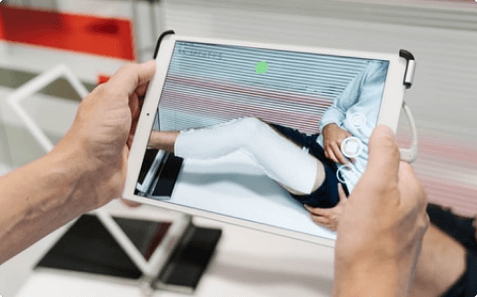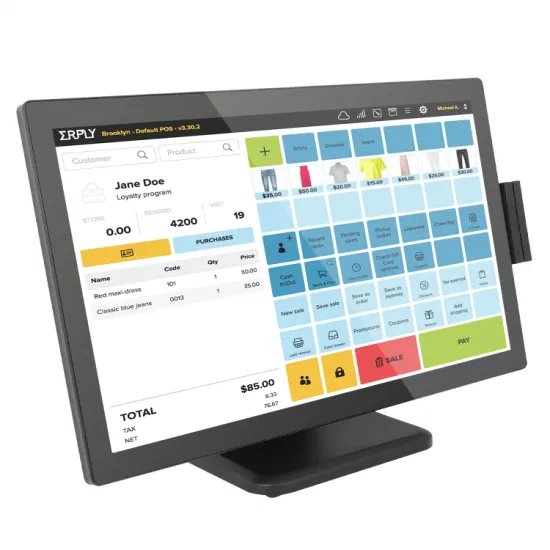Last month I reviewed and compared some of the most popular chipsets for Wi-Fi Android Tablets (Wi-Fi meaning no 3G/4G or any telecom connectivity is built into the tablet). This month I will review and compare chipsets for telecom android tablets that have 3G/4G connectivity.
In the first comparison table, I will be comparing two dual-core chipsets both from MediaTek. The second table will compare 2 quad-core chipsets while the last table will show you two quad-core chipsets that have LTE (4G).
Dual Core vs Quad Core – What’s the Difference?

The CPU core is the part of the chip that actually does the work. Each core is a separate central processing unit so a dual-core chip has got two physical central processing units on it while a quad-core chip has four physical CPUs.
So what does this mean?
Each extra core means that the device, the tablet, in this case, can do more things at once. This means that a tablet with extra cores should be more responsive than those with less.
For example, if you were using a tablet with a single core processor and you were listening to music while also browsing the web, the single core would have to split its time between the two tasks thus making your web browsing slower and less responsive. With a dual-core processor, each core would be assigned to each task speeding up the process and making your tablet more responsive.
Even if you are not using your tablet for a number of tasks simultaneously the tablet is often performing a number of tasks in the background which means that you can still benefit from the extra cores.
Should I just pick the chipset with most cores?
This will depend on what your tablet will be used for. If it is likely that your tablet will need to perform many tasks at the same time or run resource-intensive applications then a quad-core chipset may be what you are looking for to ensure good responsiveness and speed. However, if your tablet is only intended for a few specific functions a dual-core chip may suffice.
Because they are more complex to design, processors with more cores are generally more expensive to purchase than those with fewer cores of the equivalent speed while the benefits may only be minimal as most of the general tasks performed by the tablets can be modest in their processing requirements.
Dual-Core Chipsets
| MT6572 | MT8312 | |
| Released | 2013 | 2013 |
| Cores | Dual | Dual |
| CPU Type | Arm Cortex A7 | ARM Cortex-A7 |
| Maximum Frequency | 1.2GHz | 1.3GHz |
| GPU | Mali-400 | Mali-400 |
| Maximum Resolution | 1024×600 | 1280×800 |
| L1 Cache (Level 1)L2 Cache (Level 2) | 32KB256KB | 32KB256KB |
| Lithography | 28nm | 28nm |
| Maximum Memory | RAM 2GBROM 32GB | RAM 2GB ROM 32GB |
| Camera (Maximum Resolution) | 5MP | 5MP |
| Video Encoding | 720p | 720p |
| Video Decoding | 720p | 720p |
| Market | Entry Level | Entry Level |
As you can see from the table above, both of these Mediatek chipsets (MT6572 and MT8312) are quite similar. The MT8312 has a higher clock speed than the MT6572 (1.3GHz vs 1.2GHz) and can also support a higher screen resolution (1024×600 vs 1280×800).
MT6572 is actually a smartphone chipset which some companies have utilized in tablets due to its cost.
Clock Speed
The clock speed is the speed that each core in the chip can work at the task it has been assigned. For example, the CPU on the MT6572 chipset can complete 1,2000,000,000 (1.2GHz) clock cycles per second. Most tasks can be carried out without any lag or problems with basic clock speed, however, if you require a tablet that must carry out more intensive tasks a higher clock speed may be required.
Screen Resolution
The screen resolution or display resolution is given in terms of the number of pixels that are displayed in each dimension (width and height) of the screen. The MT8312 has a screen resolution of 1280×800 meaning the width shows 1280 pixels and the height shows 800 pixels.
The higher the screen resolution is, the clearer the image on the screen will be however this difference may not always be clearly noticeable when dealing with smaller screens.
Quad-Core Chipsets
| Spreadtrum 7731 | MT8382 | |
| Released | 2014 | 2014 |
| Cores | 4 | 4 |
| CPU Type | ARM Cortex-A7 | ARM Cortex-A7 |
| Maximum Frequency | 1.3GHz | 1.3GHz |
| GPU | Mali-400 | Mali-400 |
| Maximum Resolution | 1280×800 | 1280×800 |
| L1 Cache (Level 1)L2 Cache (Level 2) | 32KB512KB | 32KB256KB |
| Lithography | 28nm | 28nm |
| Maximum Memory | RAM 2GBROM 32GB | RAM 2GBROM 32GB |
| Camera (Maximum Resolution) | 8MP | 13MP |
| Video Encoding | 1080p | 1080p |
| Video Decoding | 1080p | 1080p |
| Market | Mid-Range | Mid-Range |
Similar to the MT6572, the Spreadtrum 7731 is also a cell phone IC that companies have used in tablets. The Spreadtrum 7731 has a larger L2 Cache than MediaTek’s MT8382 while the MT8382 has the capability for a higher camera resolution.
L1/L2 Cache
A CPU cache is a smaller faster memory used by the central processing unit (CPU) of a computer to reduce the average time to access memory. An L1 cache (level 1 cache) will work together with the L2 cache to improve the tablet’s performance.
The L1 cache is smaller and faster than the L2 cache. The L2 cache will, therefore, hold more information and commands than the L1 cache. The L2 cache will then send these commands and information to the L1 cache when required. The doubled size of the Spreadtrum 7731’s L2 cache over the MT8382 (512kb vs 256kb) will result in a slight performance improvement.
Quad-Core LTE Chipsets
| MT8735 | MSM8916 | |
| Released | 2015 | 2014 |
| Cores | 4 | 4 |
| CPU Type | ARM Cortex-A53 | ARM Cortex-A53 |
| Maximum Frequency | 1.3GHz | 1.4GHz |
| GPU | Mali-T720 | Qualcomm Adreno 306 |
| Maximum Resolution | 1280 x 800 | 1920*1200 |
| L1 Cache (Level 1)L2 Cache (Level 2) | 32KB512KB | 32KB512KB |
| Lithography | 28nm | 28nm |
| Maximum Memory | RAM 2GBROM 32GB | RAM 2GBROM 32GB |
| Camera (Maximum Resolution) | 13MP | 13.5 MP |
| Video Encoding | 1080p | 1080p |
| Video Decoding | 1080p | 1080p |
| Market | High-end | High-end |
Finally, we look at MediaTek’s MT8735 and the Qualcomm Snapdragon 410 MSM8916. These final two chipsets differ a lot from the previous 4 chipsets. They are quad-core, similar to the Spreadtrum 7731 and MT8382 however they use the ARM Cortex-A53 CPU’s instead of the ARM Cortex-A7. Another notable difference is that they both support LTE.
ARM Cortex-A53
The ARM Cortex-A53 CPU delivers a significantly higher performance to the Cortex-A7 which you can see from the graph below (www.ARM.com).

LTE/4G
LTE (Long-Term Evolution), which is also referred to as 4G meaning the fourth generation of mobile data technology, provides substantially faster network speeds than 3G, the third generation technology which is used in all the other chipsets mentioned in this article.
Theoretically, 4G can be up to 10 times faster than 3G. It should be noted that 4G networks are not available worldwide and that the signal strength may not be as strong in more rural areas outside of big cities. Click here a list of the current countries that have 4G/LTE and the companies that supply it.
Any Questions?
I hope you found some value from this article and that it may be able to help guide you towards a suitable chipset for your device. If you have any questions about any of the above chipset or indeed any other chipsets that you might be interested in using please feel free to ask me and I will do my best to provide you with an accurate answer.
By Garry from Hatch


